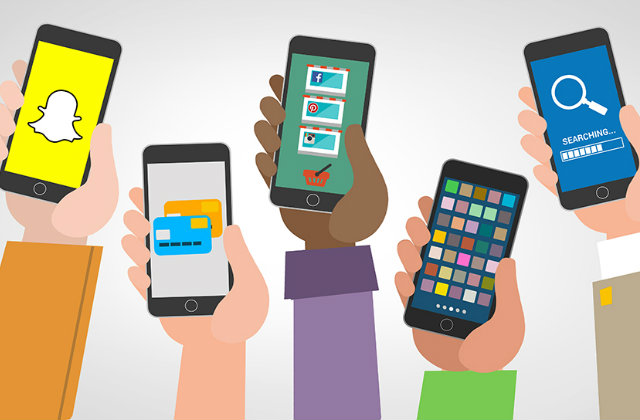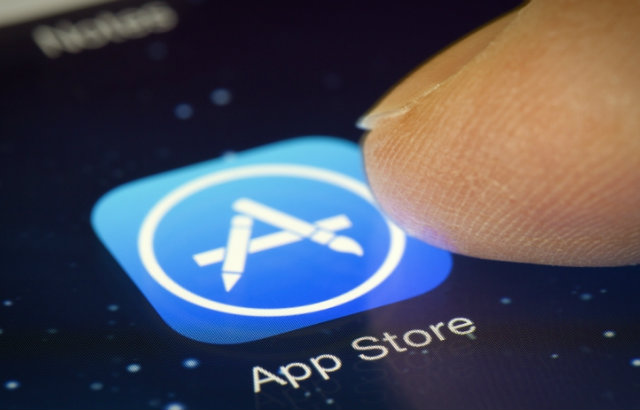
Everyone wants to build the next Snapchat, Uber, or Angry Birds. Developers usually assume that their app can become the next big thing because it is a solid product, with a clear value proposition and the aim to improve customer’s life. However, this is just the beginning.
Let’s face it, your app is not alone: there are now more than 2 million mobile apps available for Android, and more than 1.5 million in the Apple Store. What makes an app successful is not the fact that it has been created. It is how you can plan and execute a mobile app marketing strategy to engage and monetize customers.
First things first, why should you invest in branded app development? The answer is in one simple number: the apps now account for 86% of the time spent on mobile devices. The smartphone is the primary reference for every single activity we carry on as human beings, customers and organizations. And apps have become the core of the online environment.
The focus on marketing does not mean that a good development and the inner value of a mobile application are not important. If your app is defective, delivers a bad user experience and has a dull design, you will never stand out from the crowd. Therefore, you are doomed.
At the same time, if you do not build a strong ‘reason why’ and a distinctive essence, you would never answer the most critical questions of the mobile era. “Why should I care to download and use your app?”; “What makes it different from the thousands of alternatives out there?”
We see a huge opportunity: In 2017, app downloads will hit 108 billion. We also see a huge threat: How can you be sure that your app will survive the competition?
A thoughtful app strategy has four pieces:
- A strong value - the reason why people should download and use your app.
- A strong development path - any release is the tipping point for the next one.
- A continuous marketing plan - the distribution process does not end after the release.
- A specific monetization plan - the revenue model that will sustain your efforts.
They all seem reasonable pieces, and yet only a small percentage of businesses understand how effectively mobile apps could be used to promote the brand and connect with customers. The results: apps with no value; apps that never get an update; money spent without a marketing plan; developers that have no clue how to monetize their customers.
If you do not have all the pieces in place from day one, you are destined to limp along. The innovation drives fast, and the apps as we know them now are rapidly evolving into something more complex, integrated and smart. Chatbots are the main trend now, but they only represent one of the possible evolutionary paths, together with the digital signage and the Internet of Things.
In this ever-changing scenario, do not make the mistake to cling to old beliefs. Downloads, for instance. We do not really need to remember that mobile marketing is not a matter of downloads, but too many brands still focus on the number of downloads to determine the success of their strategy.
This is the result of a misconception, born and grown when the mobile apps were still for the few, and there was not so much competition around. In today’s crowded stores, downloads might be an eye-catching vanity KPI but they rarely tell too much about the destiny of your app.
Many important companies have learned the truth the hard way that. Even when your app gets downloaded, it does not mean you are hitting the target by delivering a great customer experience:
- The average user has 36 apps installed;
- Only 26% of apps are used daily;
- 25% of apps are never used;
- 65% of customers stop using an app within three months.
These numbers mean that you need other key performance indicators to be certain that your app is ultimately working. They also tell the importance of an ‘app+ strategy “to maximize their potential to win, serve, and retain their customers in their mobile moments.” (Forrester)

Sure, there are lots of reasons why even good apps fail to deliver results (ROI, revenues, engagement), but one big reason is the lack of effective marketing. So, how do you create a strategy that puts all the pieces together? These are five core elements you should never forget.
CUSTOMER NEEDS
If you build an app and you do not know what customers want, you will miss the most critical part. One-fits-all strategies do not work with mobile marketing. People determine the way brands should address them and reach them, with their habits and behaviors. Start with a question: “What do my mobile customers need?”
LAUNCH PLANNING
Mobile marketing is a long-term effort. This is even more true when you are planning the launch of your mobile application. One does not simply publish the app and wait for miracles. You need to strategize your launch months before the day it actually goes live. Establish your tone of voice, priorities and messaging. The first impression matters.
APP STORE OPTIMIZATION
What is the point of developing a great app if nobody can find it? We all understand the importance of search engine optimization to rank higher with online contents. With more than 4 million apps available, we also need to familiarize with app store optimization, to gain low-cost app visibility, increase the quality of your store page and boost conversions.
USER ACQUISITION
The development is done, your app is online, and your page is well optimized. You have done a good job, but the process is not over yet. Is anyone downloading and using the app? Your marketing effort must focus now on customer acquisition. What channels will you exploit to get customers? Advertising, promotional materials, social media, public relations, community management?
USAGE INCENTIVES
Distribution and promotion are critical to boosting usage. Usage on its part is essential to retaining users, keeping your app top of mind, and making your app profitable. You need to encourage social shares and set incentives to ensure that users do not forget the app: discounts and offers, mobile-only rewards, exclusive events, gamification, advanced loyalty dynamics.
With mobile device sales steadily growing all over the world, you are facing a unique opportunity to reach your customers and engage with them with meaningful experiences in every moment of truth. By focusing on mobile marketing alongside development, you can create a product that not only makes life easier for customers but also makes a profit for your company.
YOU MIGHT ALSO LIKE: 5 Common Myths About App Store Optimization
To help you provide a strategic advantage to your organization, Neosperience has crafted the first DCX 7-Steps Checklist, with requirements and insights for a successful digital transformation. Download the free guide here:



 Your magnifing glass to deeply understand your users and increase the value of each relatonship.
Your magnifing glass to deeply understand your users and increase the value of each relatonship. Listen to the voice of your customers deeply to understand what they truly want.
Listen to the voice of your customers deeply to understand what they truly want. The Lead Generation Platform to get leads from anonymous traffic on your website.
The Lead Generation Platform to get leads from anonymous traffic on your website.  Understand the behavior of people in physical spaces and monitor safety requirements.
Understand the behavior of people in physical spaces and monitor safety requirements. The Digital Commerce Platform designed to follow the most modern technological standards..
The Digital Commerce Platform designed to follow the most modern technological standards.. The XReality platform to tell brand and product stories by connecting physical and digital worlds.
The XReality platform to tell brand and product stories by connecting physical and digital worlds. Points, rewards, levels, badges, missions: a world of nudges to nurture your customer community.
Points, rewards, levels, badges, missions: a world of nudges to nurture your customer community. Discover all the other solutions!
Discover all the other solutions!









